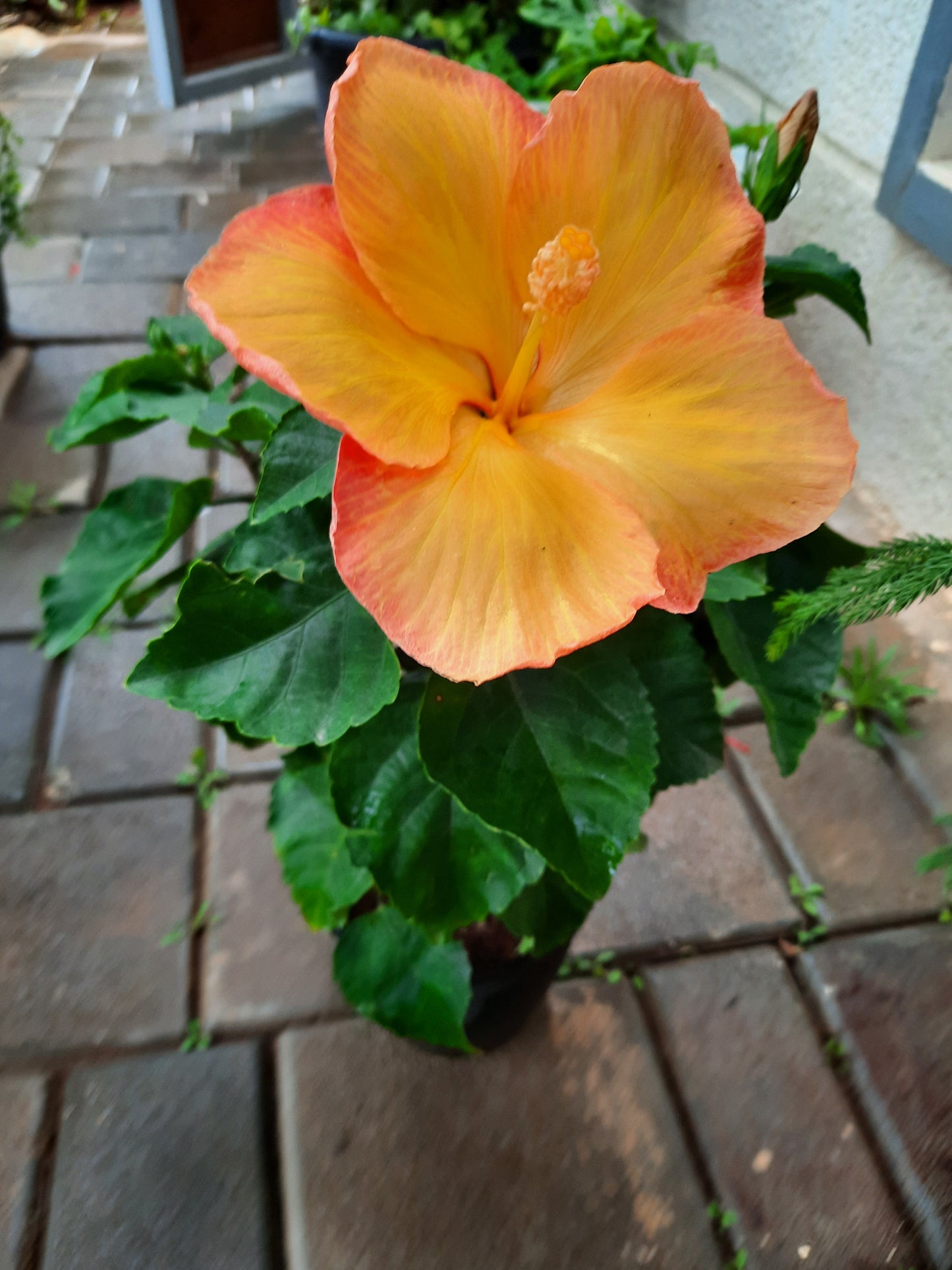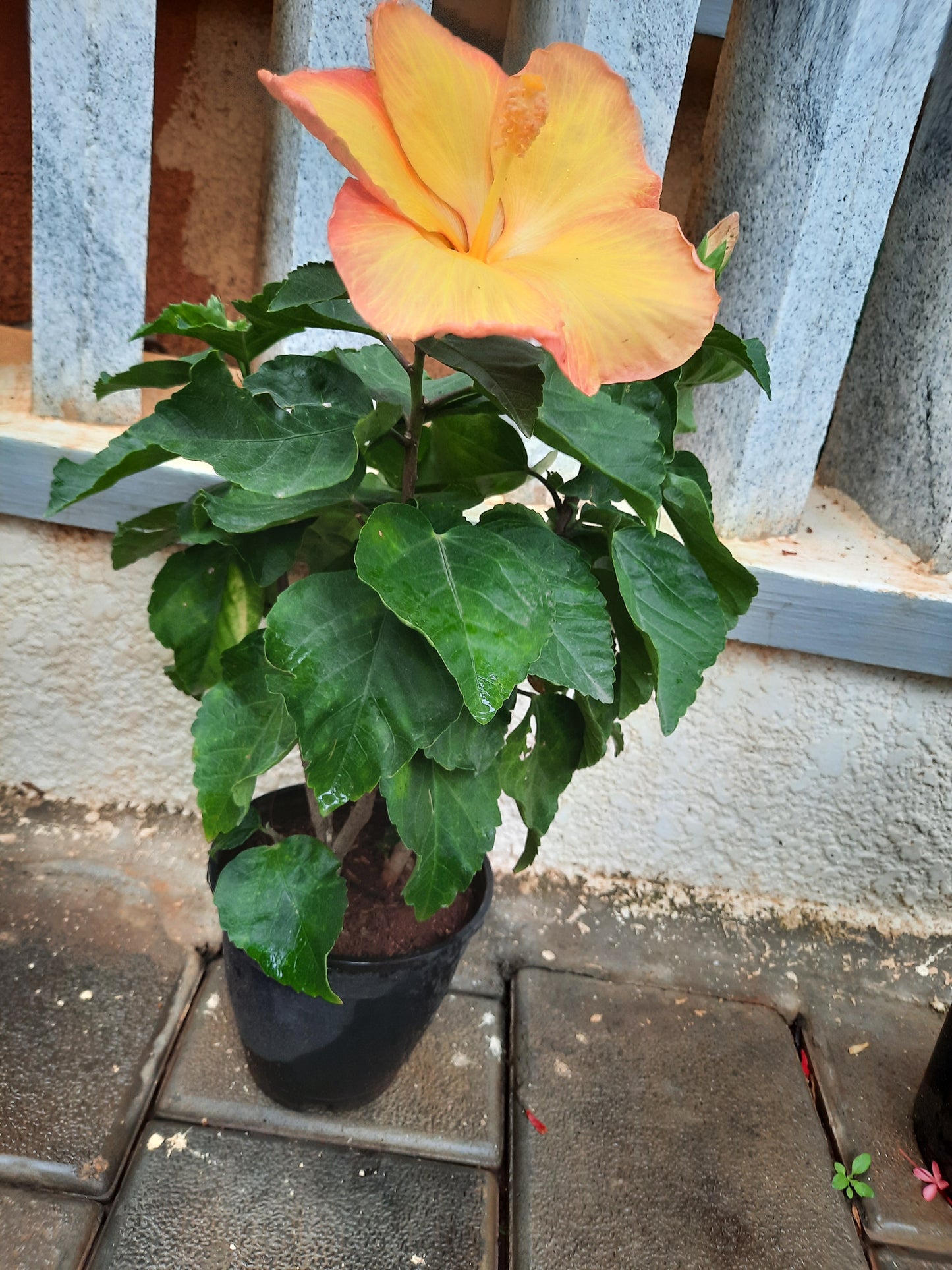Plantsden
Dwarf Hibiscus (Any color) in 6inch pot
Dwarf Hibiscus (Any color) in 6inch pot
Regular price
Rs. 249.00
Regular price
Rs. 399.00
Sale price
Rs. 249.00
Unit price
per
Shipping calculated at checkout.
🎄
CHRISTMAS OFFER
Flat 15% OFF on your order
GET 10% OFF
On your first order
We deliver only in Bangalore
Direct from Nursery
Couldn't load pickup availability
🌿 Plant Care Guide
- 💡 Light: Full to partial sunlight
- 💧 Water: Regular watering; keep soil slightly moist
- 🌱 Soil: Nutrient-rich, well-draining garden soil
- 🌡️ Temperature: 15°C – 35°C
- 💨 Humidity: Moderate
- 🪴 Care Level: Easy to moderate maintenance
Our Safe Delivery Promise

Damage-Proof Packaging
Sturdy design ensures zero damage during transit.
Delivered Fresh
Keeps plants hydrated and healthy upon arrival.
Eco-Friendly Materials
Sustainable, breathable packaging for nature.

Care Instructions
Care Instructions
Indirect sunlight, water twice a week
Product Description
Product Description
- Dwarf Hibiscus refers to compact cultivars of the Hibiscus genus, prized for their large, colorful trumpet-shaped flowers and suitability for small gardens, containers, or indoor spaces.
- Flowers come in a wide range of colors—red, pink, orange, yellow, white, and bicolor—measuring 2 to 6 inches across depending on the variety.
- Plants typically grow 1 to 3 feet tall, with glossy green leaves and a more restrained growth habit compared to standard hibiscus varieties.
- Requires full sun (at least 6 hours daily) for best blooming; can tolerate some shade but may flower less.
- Needs well-draining, consistently moist soil; regular watering and fertilization every 4–6 weeks during the growing season promote healthy blooms.
- Benefits from early spring pruning to maintain shape and encourage branching; can be grown in containers and moved indoors in colder climates.


Why Choose PlantsDen?

Healthy & Fresh Plants
We provide well-nurtured plants ready to brighten your space.

Eco-Friendly Packaging
All plants are packed using recyclable, eco-safe materials.

Carefully Selected Varieties
We handpick unique and vibrant plants to enhance your home or garden.
What Our Plant Lovers Say 🌿
"My Fern arrived healthy and beautiful! Loved the packaging!"
- Aisha K.
"Excellent quality plants and super helpful care tips."
- Rohan M.
"Beautifully packed and delivered fresh — highly recommend!"
- Neha S.
"This is my third order — and they never disappoint!"
- Arjun P.
"The plants bring such a fresh vibe to my balcony!"
- Simran L.
"great product a must buy"


